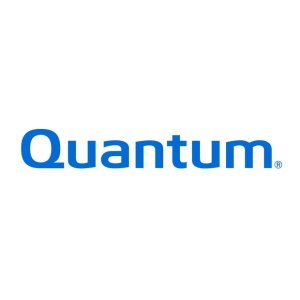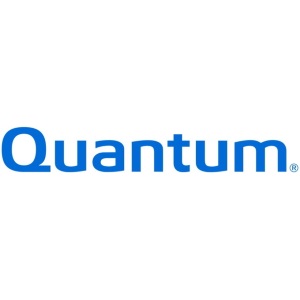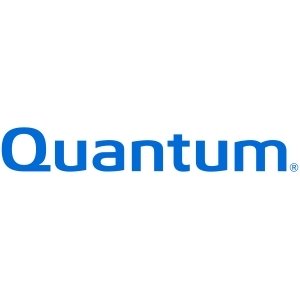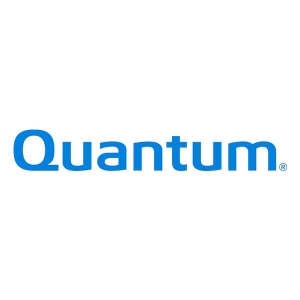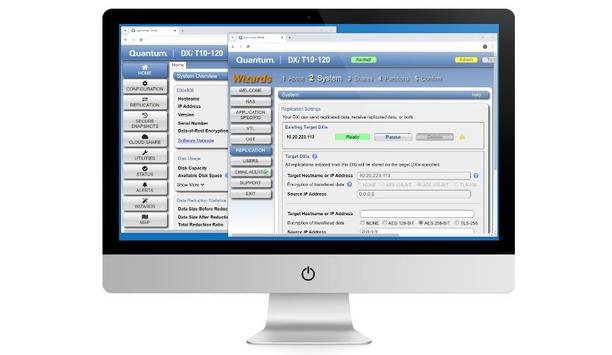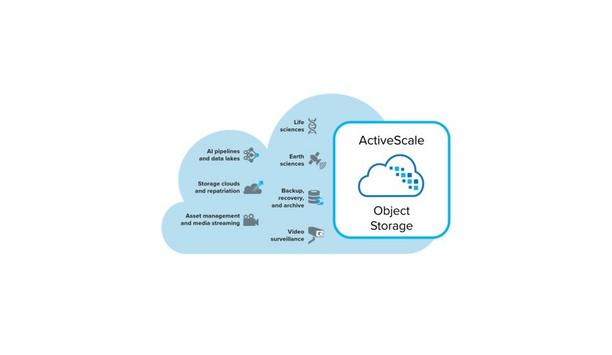Quantum Corporation - Experts & Thought Leaders
White papers from Quantum Corporation
Surveillance Beyond Security
DownloadLatest Quantum Corporation news & announcements
VITEC, a market-pioneering provider of IPTV, video streaming and digital signage solutions, showcased its ability to deliver end-to-end solutions for managing, recording, tagging, and retransmitting video streams with a unique workflow demonstration at Silvus Connect Germany 2024. The event – attended by military, government, and first-responder organisations from around the world – provided end users with first-hand experience of Silvus-based mesh networked communication solutions and applications. Range of live video feeds VITEC technology was deployed to integrate a wide range of live video feeds, including those from drones VITEC technology was deployed to integrate a wide range of live video feeds, including those from drones, bodycams, and static cameras, and deliver them to various endpoints in critical scenarios. “It was great to work with partners at Silvus Connect to demonstrate what can be achieved. VITEC is uniquely positioned to deliver a complete solution that brings diverse inputs together, making them usable and accessible across multiple platforms,” said Peter Hoffmann, Senior Business Development Manager at VITEC. Unique operational challenges Hoffmann added: “The event reinforced the reliability of our solutions in critical environments and demonstrated our ability to collaborate effectively with partners to streamline complex workflows and address unique operational challenges.” The event, hosted by Broadcast Solutions at an airfield close to its headquarters in Bingen am Rhein, Germany, saw VITEC deploy several of its products to facilitate the showcase. VuWall Command and Control Centres Broadcast Solutions MeshLink jointly with VITEC MGW Diamond and MGW Pico+ TOUGH encoders Broadcast Solutions MeshLink together with VITEC MGW Diamond and MGW Pico+ TOUGH encoders were used to stream video feeds from drones, static cameras, and bodycams, while ChannelLink gateway distributed content to multiple endpoints, including public displays and VuWall Command and Control Centres. The EZ TV Platform managed and delivered live feeds to public displays, harnessing the EZ TV Lite Player for viewing via ruggedised PC and standard PC clients. To record and tag live feeds efficiently, VITEC employed EZ TV Media Library, enabling AI-driven metadata tagging for improved content recording and retrieval. Operational requirements of the event Managing and distributing video streams from multiple sources, each utilising distinct protocols and formats, presented a significant challenge. VITEC’s technologies ensured consistent delivery with minimal latency to meet the operational requirements of the event by standardising and integrating video feeds from drones, bodycams, and static cameras. Additionally, its technology delivered streams in formats compatible with multiple receivers, such as videowalls, mobile devices, and public displays. VITEC worked closely with partners including Silvus, Fuji, Quantum, VuWall and Broadcast Solutions to ensure all content could be successfully received, distributed, and displayed, meeting the expectations of all stakeholders at the event.
Quantum® Corporation, the pioneer in end-to-end data management solutions designed for the AI era announces DXi T-Series all-flash backup appliances to accelerate key data protection processes that help customers more effectively prepare, protect, and recover critical IT operations from ransomware and other data risks. DXi T-Series With data-intensive initiatives, like AI, a high priority, coupled with the continuing and ever-present threat of ransomware, data protection is an essential service across all organisations. The DXi T-Series expands the industry’s most efficient backup data management platform with compact, all-inclusive, all-flash appliances that are easy to deploy and use across edge, core, and cloud for fast, efficient protection and recovery. Data protection “With continued improvements in density, cost, performance, and energy efficiency, QLC flash is the right choice for the next generation of data protection, especially for mission-critical relational and NoSQL databases, file systems, and object stores that fuel data-intensive workflows, data lakes, and AI pipelines,” says Sanam Mittal, vice president, DXi engineering for Quantum. “With all-flash DXi T-Series backup appliances, our customers can more efficiently protect their data and quickly recover operations in the face of a widespread ransomware attack." Rapid ransomware recovery DXi backup appliances have long delivered simple, scalable backup, data protection, and disaster recovery "These new solutions expand Quantum’s all-flash portfolio beyond Quantum Myriad™, StorNext™, and ActiveScale® file and object storage solutions to include DXi T-Series appliances optimised for data protection and rapid ransomware recovery.” DXi backup appliances have long delivered simple, scalable backup, data protection, and disaster recovery across sites to give customers trusted business continuity. First all-flash target backup appliance With the DXi T-Series, Quantum introduces the industry’s first all-flash target backup appliance designed for edge deployments, small and medium-sized businesses (SMBs), and mission-critical data storage infrastructure. The DXi T-Series helps customers proactively prepare and protect against cyberattacks, and, when attacked, rapidly recover their data. The DXi T-Series all-flash platform achieves outstanding performance with ingest rates up to 113 terabytes per hour, providing up to 65 times faster backup rates and up to 13 times faster restore times compared to competitor appliance solutions based on hard disk drives. Data rehydration With DXi T-Series all-flash performance, customers can perform more aggressive backup schedules for better recovery point objectives (RPO), more regularly validate backup data sets and test recovery procedures, analyse backups for malware using proactive and real-time virus scanning, and achieve faster recovery time objectives (RTO) in case of attack. Plus, the DXi T-Series accelerates data rehydration to speed up other key workflows, including test and dev for analytics and application development, e-discovery and compliance, and long-term archiving. 70 times more efficient DXi T-Series appliances seamlessly cooperate with DXi resources deployed across the edge Scaling from 15 to 120 usable terabytes in an optimised 1U form factor, DXi T-Series appliances benefit from Quantum's patented data reduction technology to provide up to 70 times more efficient use of flash resources. With bundled replication, cloud tiering and immutability features plus a rich software ecosystem including Veeam, Veritas, and Commvault, DXi T-Series appliances seamlessly cooperate with DXi resources deployed across the edge, the core, and the cloud for end-to-end data protection. Role of data “Our customers’ data protection requirements are rapidly evolving given the critical role data plays in their business operations,” says Kevin Corcoran, vice president of sales for Storage IT Solutions, a Midwestern data management solutions provider. “AI and other data-rich use cases are giving rise to growing data sets, longer retention, and increasing data access." Fast, simple, and secure backups "The DXi T-Series helps us address the need for fast, simple, and secure backups, and most importantly, enables our customers to quickly recover their data when faced with a ransomware attack or other data disasters.” DXi T-Series backup appliances are planned for release in Q2 2024.
Quantum® Corporation, the pioneer in end-to-end data management solutions designed for the AI era announces ActiveScale® Z200 all-flash object storage to help customers accelerate mission-critical AI pipelines and massive data workflows. This new solution extends Quantum’s all-flash leadership beyond Quantum Myriad™ and StorNext™ file system solutions to address S3-native use cases that require rapid data ingest, high-performance analysis, fast data retrieval, and long-term data preservation for compliance, AI models, and unstructured data management. ActiveScale Z200 Customers gain more agility and speed to build massive data lakes and storage clouds The ActiveScale Z200 appliance expands the award-winning ActiveScale portfolio to include an all-flash option that delivers powerful new levels of throughput and transactional performance at any scale, from terabytes to exabytes. With the ActiveScale Z200, customers gain more agility and speed to build massive data lakes and storage clouds, ingest and prep raw data sets, optimise and run AI pipelines and other data-intensive workflows, and cost-effectively preserve and protect massive data sets. Performance and cost efficiency “AI and other data-intensive business initiatives are driving the need for a simpler, easy-to-access infrastructure that provides both performance and cost efficiency at scale,” says Bruno Hald, vice president of secondary storage for Quantum. “With the introduction of the ActiveScale Z200, we are meeting the need for a fully integrated enterprise object storage solution that merges high-performance scale-out flash and scale-out tape libraries to build data lakes and storage clouds of outstanding scalability, simplicity, performance, and cost efficiency, without compromising data availability and long-term durability." Object storage platform ActiveScale is a simple, reliable scale-out object storage platform built for always-available access and massive scale "With the ActiveScale Z200, our customers can extract even greater value from their digital assets quickly and efficiently.” Quantum ActiveScale is a simple, reliable scale-out object storage platform built for always-available access and massive scale, efficiently storing and protecting billions of objects with pioneering durability. Fueling AI pipelines and data-intensive workflows The all-flash ActiveScale Z200 delivers up to five times greater throughput (gigabytes per second) and up to nine times more transactions (objects per second) over traditional hard drive object storage solutions, dramatically expanding the applicability of ActiveScale to performance-oriented workloads including high-throughput data ingest, AI data preparation, training and inferencing, NoSQL databases, and content streaming. The ActiveScale Z200 enables high-performance analysis of object data sets at any scale to help customers achieve faster insight, discovery, and innovation. The ideal archive storage tier The ActiveScale Z200’s high throughput makes it particularly well-suited for ingesting data ActiveScale is the industry’s only object storage platform architected for both active and cold data, making it uniquely suited for building massive data lakes, storage clouds, and long-term archives at up to 80% lower cost than alternative solutions. The ActiveScale Z200’s high throughput makes it particularly well suited for ingesting data into these large data stores, and with its unique ability to process and densely store metadata in flash for hundreds of billions of objects in the cold storage tier, the Z200 reduces overall footprint and cost. Fast and easy access With fast and easy access through standard S3 Glacier interfaces, objects are easily restored in bulk within minutes for additional analysis, model recalibration, and re-monetisation. “The age of AI is upon us. Within our customer base, the desire to extract more value from their massive data assets is real and growing,” says Brent Angle, chief technology officer for Cinesys.io, a leading broadcast and media systems integrator. Data preservation and management "Rapid analysis of content, on the scale of hundreds of petabytes, plus cost-effective management and preservation of this data is essential to meet their objectives." "The ActiveScale Z200 all-flash solution will help our customers optimise their data infrastructure to innovate faster with confidence.” The ActiveScale Z200 all-flash object storage solution is available immediately. The solution is also available as software only and as-a-service.
Insights & Opinions from thought leaders at Quantum Corporation
Video surveillance has become the king of data—and is known to be the largest producer of data in the world. A single day of video surveillance is estimated to produce more than 500 petabytes of data—for context, a single petabyte is equivalent to 1,000 terabytes – and that number is only expected to grow. Why is it expected to grow? The answer lies with new and emerging technology, and the way that technology operates. For physical security teams, the rapid amount of data they are suddenly managing has become complex and overwhelming. Gone are the days of straight forward, plug-it-in technology where all you had to do is set it up and monitor. With enhanced capabilities and analytics, cameras have gone from being static wall fixtures to active parts of security and business operations. Existing security infrastructures Today’s cameras have higher resolution, and as a result, are producing more data, and that data can be used in more ways than before. This gives physical security teams a clearer picture into safety and security, as well as an inside look into business operations, which is being fuelled by video analytics that are more functional and mission-critical than they have been in the past. All of these things added together put tremendous strain on existing security infrastructures All of these things added together put tremendous strain on existing security infrastructures, driving the need for more scale, resilience, and higher performance. So, how can you implement an infrastructure that keeps up with growth and fulfils all of your organisation’s needs without increasing complexity or sacrificing ease of use? Archiving of valuable data Here are a few considerations organisations must keep in mind: Cost: Understandably, many organisations want to expand their storage infrastructure, particularly to support long-term archiving of valuable data-- without drastically raising costs. However, approaching this infrastructure challenge with only immediate cost in mind could lead to an inadequate solution, and you must consider long-term costs as well. Long-term costs include both potential savings (if a solution is chosen that can scale for the long run) as well as unexpected costs, like replacing hardware or if the current tech becomes obsolete and must be replaced in favour of a newer model. Constant hardware failure Cost also factors into resilience, because organisations can’t afford major or constant hardware failure Cost also factors into resilience, because organisations can’t afford major or constant hardware failure, and with more data being generated and more of it being mission critical to support safety and business initiatives, it’s imperative that infrastructure does not go down, and retains data and performance standards in the event of a failure. It’s critical that organisations not only consider the one-time implementation costs for a modern infrastructure, but also consider the cost savings of having an infrastructure in place that requires less hardware over time, can grow with their needs, won’t lose data in the event of a failure and reduces the risk of downtime with the system. Physical security infrastructure Security: With all of the money and resources poured into the physical security infrastructure, organisations need to make sure they’re properly protected from cyber criminals, malware, ransomware, or anything else bad actors throw their way. Organisations must consider solutions that allow them to keep their data as secure as possible, but still easily accessible as needed by their teams for business and compliance purposes over the long term. Latest datacenter technologies It’s critical that it’s easy to use and simple to deploy without requiring the need for advanced IT skills Ease of implementation: Organisations must also consider ease of use and implementation. While it’s important to implement an infrastructure that is modern and offers the latest datacenter technologies, it’s critical that it’s easy to use and simple to deploy without requiring the need for advanced IT skills. At the end of the day, the only thing that is guaranteed is data growth, and legacy solutions may not be able to keep up with your requirements. Because of that simple guarantee, it’s critical to determine your needs now and for the future, and then do your research on available solutions based on those needs. If you do your research now, you’ll be prepared for whatever comes next, armed with both knowledge and the best solution for your organisation.
Video is an enormous wellspring of unstructured data in the enterprise environment. Finding new ways to use video data requires easy access for analysis. Gone are the days when video was recorded just to be played back later. New computer capabilities can analyse video to provide business intelligence and trends, all of which requires that a lot of unstructured data be captured, stored and kept immediately accessible. It's a driving force for companies specialising in video storage such as Quantum, which is focused on storing and managing unstructured data, including video, photos, music and sound. Managing various analytics “Unstructured data is driving the massive growth in storage today, and video surveillance fits right in there,” says Jamie Lerner, CEO and President, Quantum. As data multiplies in business, matters of storing and accessing the data take on a larger profile. Especially challenging is meeting the need to store and access expanding amounts of unstructured data, such as video. Video is also part of a changing end-to-end architecture in the enterpriseWhereas 10 years ago, video surveillance was all about recording and playback, now the emphasis is much more on an end-to-end approach. In addition to capturing and playing back video, systems have to manage various analytics, archival and data retention aspects as well as recording. Video is also part of a changing end-to-end architecture in the enterprise, including hybrid, cloud and on-premise storage. Video surveillance industry Historically, structured data, such as financial information, was stored to allow future analytics. The same trend extends to unstructured data, such as video analytics. Quantum has expanded its video storage capabilities with acquisition this year of the video surveillance business of Pivot3, provider of a hyperconverged system that provides recording, analysis and seamlessly archives data on a converged platform that is less expensive and easier to manage. In acquiring Pivot3, Quantum is refocusing the smaller company on the video surveillance industry. “We are now focused 100% on surveillance and having the highest quality while being very cost-effective,” says Lerner. “The industry is ready for an IT-forward solution that is totally focused on surveillance. You can’t make a platform all things to all people.” Traditional security customers There is overlap in large stadiums and theme parks, where Lerner sees even more opportunity to expand Pivot3 will also help to expand Quantum’s customer base. The larger company has a history of serving customers in entertainment, movies, television and sports production. The addition of Pivot3’s 500 new customers in large surveillance, transportation and critical infrastructure markets will expand the mix. There is overlap in large stadiums and theme parks, where Lerner sees even more opportunity to expand. Pivot3 also helps to bridge the gap between traditional security customers and the information technology (IT) department. “Pivot3 has a reputation as simple to use,” says Lerner. “My belief is that physical security can run separately [from IT] until you reach a certain size, then IT has to be involved. Pivot3 gives IT people in the security space a product that is well formed and fits into an IT strategy. They are not undertaking a piece of equipment that will be a burden.” Physical security presence Customers expect their infrastructure vendors to provide systems that allow them to “Set it and forget it,” says Lerner. It’s one of the big advantages of cloud computing and also central to Quantum’s approach with their traditional products. “At the end of the day, you want to run a hospital, for example, so you want your systems to be easy to use,” says Lerner. The Pivot3 acquisition will also allow Quantum to expand their physical security presence more broadly and globally. Previously, the geographic reach of Pivot3 was limited by the high cost of placing personnel in diverse locations. Under Quantum, which has been serving global companies for 40 years, the problem disappears. “Quantum has global support on all continents and in more countries,” says Lerner. “It’s a higher level of support, given size and legacy of our organisation.”
Video surveillance systems are producing more unstructured data than ever before. A dramatic decrease in camera costs in recent years has led many businesses to invest in comprehensive surveillance coverage, with more cameras generating more data. Plus, advances in technology mean that the newest (8K) cameras are generating approximately 800% more data than their predecessors (standard definition). Traditional entry-level solutions like network video recorders (NVRs) simply aren’t built to handle massive amounts of data in an efficient, resilient and cost-effective manner. This has left many security pioneers grappling with a data storage conundrum. Should they continue adding more NVR boxes? Or is there another, better, route? Retaining video data In short, yes. To future proof their video surveillance infrastructure, an increasing number of businesses are adopting an end-to-end surveillance architecture with well-integrated, purpose-built platforms for handling video data through its lifecycle. This presents significant advantages in terms of security, compliance and scalability, as well as unlocking new possibilities for data enrichment. All of this with a lower total cost of ownership than traditional solutions. Security teams would typically delete recorded surveillance footage after a few days or weeks Previously, security teams would typically delete recorded surveillance footage after a few days or weeks. However, thanks to increasingly stringent legal and compliance demands, many are now required to retain video data for months or even years. There’s no doubt that this can potentially benefit investigations and increase prosecutions, but it also puts significant pressure on businesses’ storage infrastructure. Data lifecycle management This necessitates a more intelligent approach to data lifecycle management. Rather than simply storing video data in a single location until it’s wiped, an end-to-end video surveillance solution can intelligently migrate data to different storage platforms and media as it ages. So, how does this work? Video is recorded and analysed on a combination of NVR, hyperconverged infrastructure (HCI) and application servers. Then, it’s moved to resilient file storage for a pre-determined period, where it can be immediately retrieved and accessed for review. Finally, based on policies set by heads of security, data is moved from file storage to highly secure, low-cost archive storage such as an object, tape or cloud. Data is moved from file storage to highly secure, low-cost archive storage Long-term storage This process is known as tiering. It allows businesses to use reliable, inexpensive long-term storage for most of their data, whilst still enabling security pioneers to retrieve video data when the need arises, such as during a compliance audit, or to review footage following a security breach. In a nutshell, it offers them the best of both worlds. Scaling your video surveillance infrastructure can be a headache. Businesses that rely on NVRs – even high-end units with 64 or even 96 hard drives – are finding themselves running out of capacity increasingly quickly. In order to scale, security pioneers then have to procure new boxes. With NVRs, this inevitably involves a degree of guesswork. Should they go for the largest possible option, and risk over provisioning? Or perhaps a smaller option, and risk running out of capacity again? Common management console Security pioneers can easily add or remove storage capacity or compute resources – separately or together As businesses add new cameras or replace existing ones, many end up with inadequate surveillance infrastructure made up of multiple NVR boxes along with several application servers for running other surveillance functions such as access control, security photo databases, analytics, etc. This patchwork approach leaves security pioneers scrambling for capacity, maintaining various hardware footprints, repeating updates and checks across multiple systems, and taking up valuable time that could be better spent elsewhere. By contrast, flexible HCI surveillance platforms aggregate the storage and ecosystem applications to run on the same infrastructure and combine viewing under a common management console, avoiding ‘swivel chair’ management workflows. Plus, they offer seamless scalability. Security pioneers can easily add or remove storage capacity or compute resources – separately or together. Data storage solutions Over time, this ensures a lower total cost of ownership. First and foremost, it removes the risk of over provisioning and helps to control hardware sprawl. This in turn leads to hardware maintenance savings and lower power use. Many security pioneers are now looking beyond simple data storage solutions for their video surveillance footage. Meta tags can provide context around data, making it easier to find and access when needed Instead, they’re asking themselves how analysing this data can enable their teams to work faster, more efficiently and productively. Implementing an end-to-end video surveillance architecture enables users to take advantage of AI and machine learning applications which can tag and enrich video surveillance data. These have several key benefits. Firstly, meta tags can provide context around data, making it easier to find and access when needed. Object storage platform For instance, if security teams are notified of a suspicious red truck, they can quickly find data with this tag, rather than manually searching through hours of data, which can feel like looking for a needle in a haystack. Plus, meta tags can be used to mark data for future analysis. This means that as algorithms are run over time, policies can be set to automatically store data in the right location. For example, if a video is determined to contain cars driving in and out of your premises, it would be moved to long-term archiving such as an object storage platform for compliance purposes. If, on the other hand, it contained 24 hours of an empty parking lot, it could be wiped. These same meta tags may be used to eventually expire the compliance data in the archive after it is no longer needed based on policy. Video surveillance architecture Continuing to rely on traditional systems like NVRs will fast become unsustainable for businesses Even if your organisation isn’t using machine learning or artificial intelligence-powered applications to enhance your data today, it probably will be one, three, or even five years down the line. Implementing a flexible end-to-end video surveillance solution prepares you for this possibility. With new advances in technology, the quantity of data captured by video surveillance systems will continue rising throughout the coming decade. As such, continuing to rely on traditional systems like NVRs will fast become unsustainable for businesses. Looking forward, when moving to an end-to-end video surveillance architecture, security pioneers should make sure to evaluate options from different vendors. For true futureproofing, it’s a good idea to opt for a flexible, modular solution, which allow different elements to be upgraded to more advanced technologies when they become available.
A modern guide to data loss prevention
Download7 proven solutions for law enforcement key control and asset management
DownloadThe truth behind 9 mobile access myths
DownloadAccess control system planning phase 2
DownloadSecurity practices for hotels
Download





